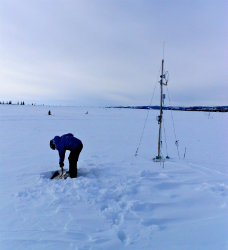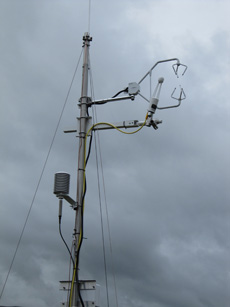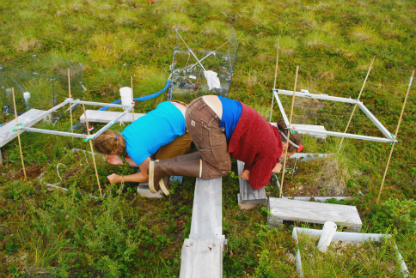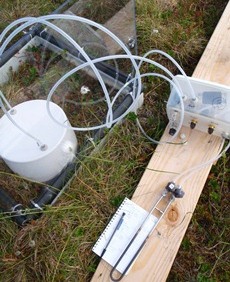Our lab uses a variety of approaches to study the impact of climate change on permafrost ecosystems and carbon balance.
Automated Flux Chambers: We utilize a system of automated chambers to measure net ecosystem exchange (NEE; the net exchange of carbon dioxide between the atmosphere and the ecosystem) in experimentally warmed plots at CiPEHR. This can be used to investigate the impact of warming on plant growth and soil respiration.
Eddy Covariance Tower: We have been using an eddy covariance tower to continuously measure NEE since 2008 and methane since 2015. These datasets can be used to calculate ecosystem carbon balance and track changes as the climate warms.
Radiocarbon and Isotopes: The laboratory features isotope preparation facilities for the analysis of natural abundance levels of stable (13C) and radioactive (14C) isotopes of carbon, as well as nitrogen (15N) and oxygen (18O). Natural abundance radiocarbon can be used to determine the age and sources of carbon cycled in terrestrial ecosystems.
Remote Sensing: We have used airborne and satellite remote sensing to identify landscape-level responses to climate change. Airborne spectral, hyperspectral, and LiDAR data collected by NASA ABoVE and NEON are available at this site.
Automated Soil Incubation System: We have an incubation system that automatically measures carbon flux and carbon isotopes designed for long-term incubation experiments. This is used to observe how Arctic soils reacted in higher temperature.
Wet Chemistry Analysis: We have used a variety of techniques to analyze nutrient availability from ion-exchange resin bags to determine abundance of NO3- and NH4+, as well as laboratory incubations to analyze rates of inorganic nitrogen mineralization at depth. Other analyses include microbial biomass, soil pH, and dissolved organic carbon.

















